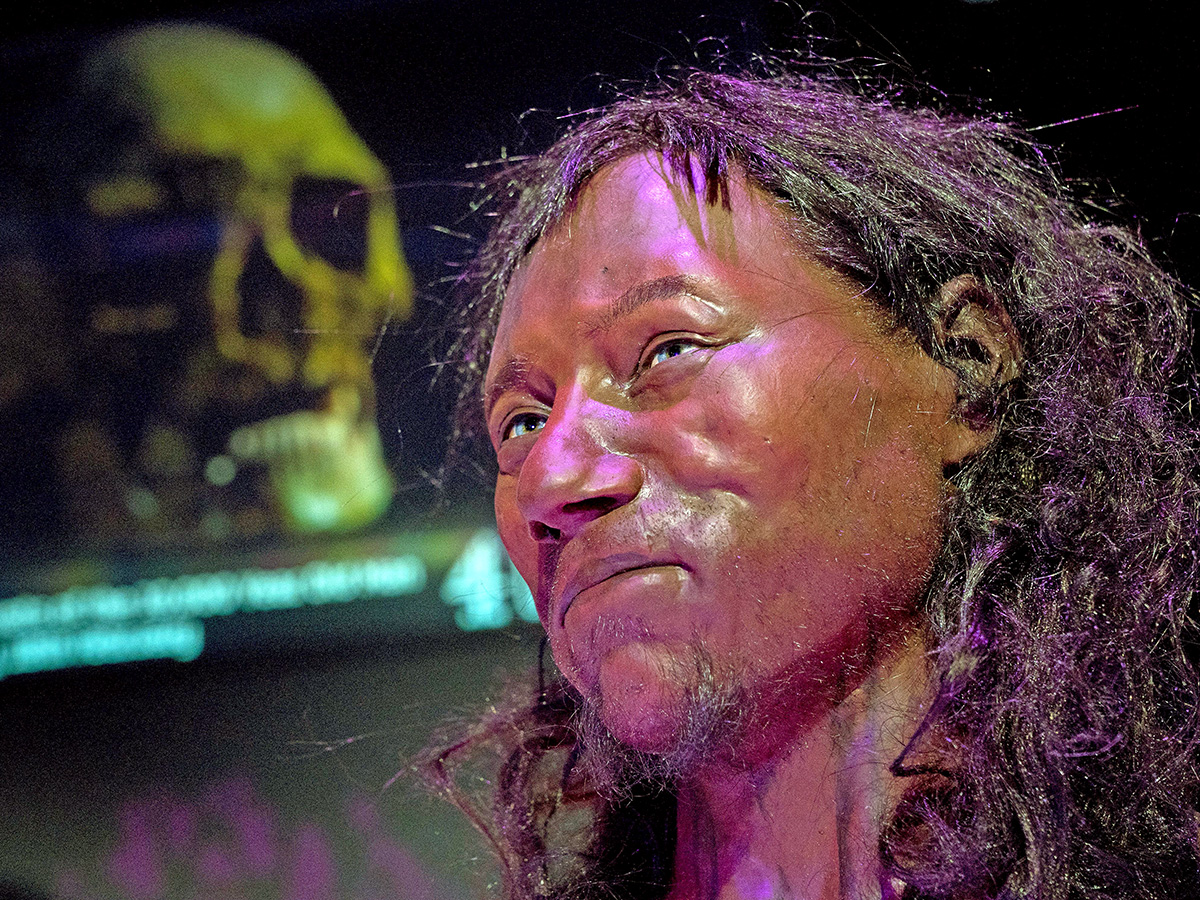The First Europeans Had a Striking Combination of Features

Scientists have put a smiling face to one of the first human residents of Great Britain.
At 10,000 years old, "Cheddar Man" is one of the oldest known Homo sapiens found in England, as well as being one of the most complete skeletons. Ancient DNA reveals that he had a striking combination of dark skin and pale eyes. In a new facial reconstruction, modelers at Kennis & Kennis Reconstructions worked with Britain's Natural History Museum to sculpt the Mesolithic man's face shape, down to a closed-mouthed smile and long, dark hair.
"He is just one person, but also indicative of the population of Europe at the time," Tom Booth, a postdoctoral researcher in paleobiology at the museum, said in a statement. "They had dark skin, and most of them had pale-colored eyes, either blue or green, and dark brown hair." [In Photos: Human Skeleton Sheds Light on First Americans]
Caveman
This color combination would be unusual today, but ancient DNA evidence suggests that it was the norm among the hunter-gatherers of northern continental Europe during the Mesolithic, Booth said. Pale eyes apparently evolved in early Europeans before pale skin, which emerged after the advent of agriculture, he said.
Lighter skin absorbs more ultraviolet light than darker skin. Ultraviolet light is necessary for humans to produce vitamin D. The ability to absorb more of it helps people at higher latitudes — who see less sunlight than people in equatorial regions — avoid vitamin D deficiency.
Cheddar Man was discovered in 1903; his bones were covered in sediment in a cave in Cheddar Gorge in Somerset, England. The cave, Gough's Cave, holds many human remains, including older skeletal remains from Cro-Magnon hunter-gatherers that bear the marks of cannibalism.
An ancient life
Cheddar Man was in his 20s when he died, according to the Natural History Museum, though his cause of death is unknown. There is a hole in his skull that could be the result of an infection during life, or simply damage from the early-20th-century excavations. He had a slim, almost feminine pelvis, and he was found alone, which is unusual for that time, Booth said. Mesolithic people usually buried their dead in communal burial sites where dozens of individuals were placed over the course of years.
Sign up for the Live Science daily newsletter now
Get the world’s most fascinating discoveries delivered straight to your inbox.
"[H]e could have been special, or he may have just curled up and died" where he was found, Booth said.
Mineral deposits and cool conditions kept Cheddar Man's DNA intact enough for researchers to sequence many of its fragments. Markers for physical traits found in the man's genome were used in the reconstruction, as were standard measurements of tissue thickness and bone-and-muscle attachments.
Cheddar Man's nearly complete skeleton is on display at the Natural History Museum. On Feb. 18, BBC Four will air a documentary, "The First Brit: Secrets of the 10,000 Year Old Man," featuring the reconstruction and the science behind it.
Original article on Live Science.

Stephanie Pappas is a contributing writer for Live Science, covering topics ranging from geoscience to archaeology to the human brain and behavior. She was previously a senior writer for Live Science but is now a freelancer based in Denver, Colorado, and regularly contributes to Scientific American and The Monitor, the monthly magazine of the American Psychological Association. Stephanie received a bachelor's degree in psychology from the University of South Carolina and a graduate certificate in science communication from the University of California, Santa Cruz.









